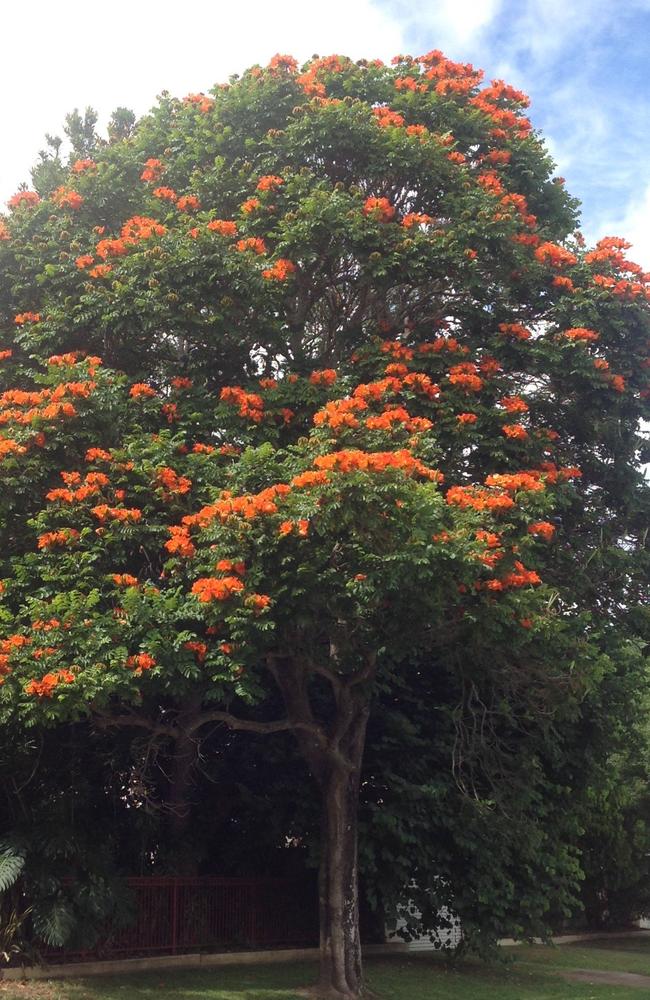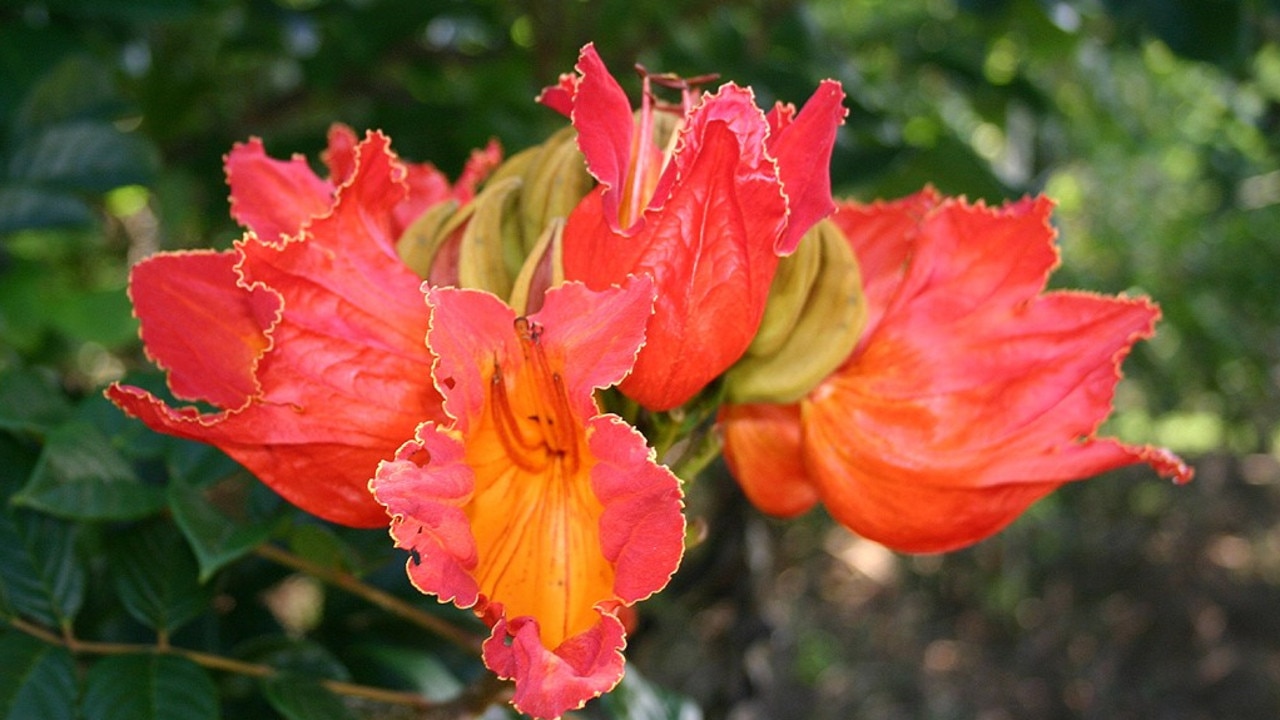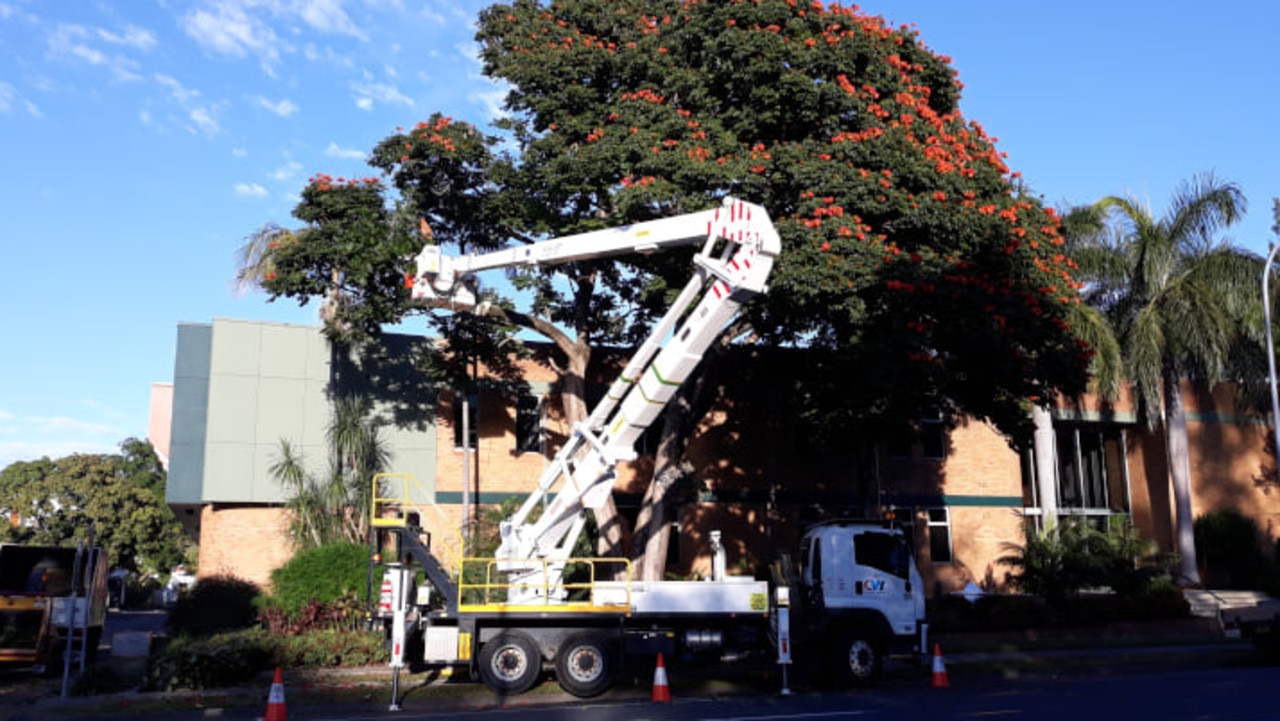African tulip tree: You should remove this tree from your yard
It’s a tree seen in backyards all over the east coast and many Aussies would recognise it. But it poses a serious danger and should be removed.
It’s a tree seen in backyards all over the east coast, and many Aussies would recognise its fiery bell-shaped blossoms.
But new research shows the flowers of the African tulip tree are killing native bees, leaving their dead bodies in its blooms, and potentially poisoning native bee larvae and hives. Experts now recommend people who can afford to remove the tree from their yards should do so.
The African tulip tree is a common sight throughout Queensland, NSW, the NT and on Christmas Island, and the introduced species is already considered a significant environmental weed across these states.
Courtney Irish, an entomologist and PhD candidate from the University of Queensland told news.com.au her research shows African tulip trees are killing native stingless bees and the species poses a significant ecological risk.
She recommends people consider removing them from their property to stop native bee death, and replace them with a native tree. Ms Irish is currently researching how exactly the tree kills native bees.
RELATED: Surprising animal you should really fear


How do African tulip trees kill bees?
Ms Irish said there’s two main theories for why native bees are found dead in the flowers of African tulip trees.
“At the moment the predominant theory is the nectar of the plant is toxic to insects. That’s why people are cutting the trees down.
“There has been a bit of research done in other countries on other species, but we haven’t done enough research here in Australia – so that’s what we’re doing now,” she said.
Ms Irish said it can take up to 24 hours for the bees to die after ingesting the toxic nectar – which is a concern because they can spread poison to their hives.
“If there is something in the nectar that’s bad for the bees, they could bring it back to the hive, and that could be fed to the larvae, and that could affect the larval development,” Ms Irish said. “This could affect the survival rates and affect the entire hive.”
Her second theory is that the bees may be getting “stuck inside the flower”.
RELATED: Europe to ban bee-harming pesticides

“Bees need a particular cell structure inside the flowers to be able to climb out (of flowers). It could just be that they’re feeding on the nectar that pools at the bottom of the flower, they’re getting covered in nectar and getting really sticky, and they can’t rest to clean themselves off to be able to fly out again.
“It’s unusual that it takes such a long time for this toxin to kick in, but we’re still finding them dead inside the flowers.
“If they died a day later they might be coming back to the flower a day later and dying.
“But we’re still finding them dead inside the flower.”
Should you remove African tulip trees in your yard?
“They are an invasive pest … So even without the bee deaths it would be good to get rid of them,” Ms Irish said.
“There are limited resources that can go into conservation and you have to decide where to put those resources.
“Removing these trees is very difficult. It can be a very expensive process.
“If people are already removing trees, if they’re fronting those costs, absolutely that’s great,” she said.
Her recommendations are supported by Dr Tim Heard, the President of the Australian Native Bee Association and an entomologist and ex-CSIRO research scientist.
“The nectar and the pollen of this plant have been shown to increase mortality rates in insects that feed on those foods,” Dr Heard told news.com.au.
“It is primarily a bird pollinated food,” he added, pointing out bees can’t see the red colour of the flowers.
“However some insects do visit the plant – so even if they can’t see it, they can smell (the pollen) and they can get poisoned by the flower.
“What we do know is that they do kill native bees. You can see (dead) native bees in the flower,” Dr Heard added.
He said it was important to remember there were other factors causing more significant impact to bees.
Compared to other threats faced by bees, he said he considered it a fairly minor threat.
Dr Heard said native bees faced a larger threat from habitat destruction caused by land clearing, insecticide use and climate change.




